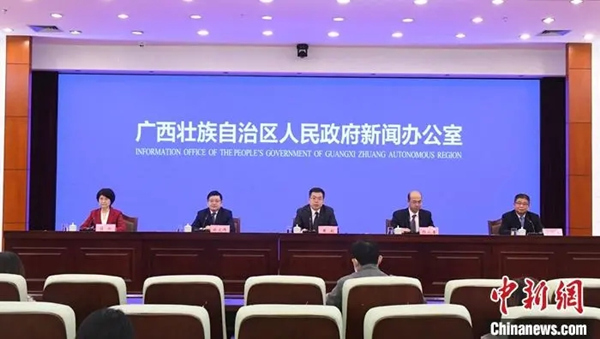Guangxi takes measures to comply with RCEP rules

Guangxi releases a series of measures to carry out better matchmaking with the implementation of new RCEP regulations on Nov 1. [Photo/China News Service]
On Nov 1, Guangxi Zhuang autonomous region released a series of measures to carry out better matchmaking with the implementation of new Regional Comprehensive Economic Partnership (RCEP) regulations, said Huang Yi, deputy head of the Department of Commerce of Guangxi Zhuang autonomous region.
The document pointed out that Guangxi will continue to attach great importance to ASEAN markets while seeking more trade opportunities with Japan, South Korea, Australia and New Zealand.
Huang said that as China's direct connection for the opening-up to ASEAN, Guangxi will embrace precious opportunities brought by the signing of RCEP to take advantage of its geographic location and accelerate its integration into the new development pattern.
The document includes 24 specific measures in five sectors.
Guangxi will make good use of the RCEP rules of origin and make full use of its industrial advantages to promote the formation of cross-border industrial, supply, and value chains in sectors such as electronic information, new chemical materials, automobiles, new energy vehicles, and the processing of distinctive ASEAN products.
The region will devote more efforts in laying a foundation of investment in RCEP countries, and promoting cross-border investment facilitation.
In addition, Guangxi will build a demonstration zone for the high-quality implementation of RCEP, promote the establishment of the China (Nanning) RCEP International Expo Center, and carry out international standardization cooperation and exchanges around RCEP-related regulations.
From 2010 to 2020, the trade volume between Guangxi and RCEP countries has increased from $8.8 billion to $39 billion, an increase of 3.4 times. RCEP countries have become Guangxi's largest overseas investment destination and its third largest source of foreign investment.




